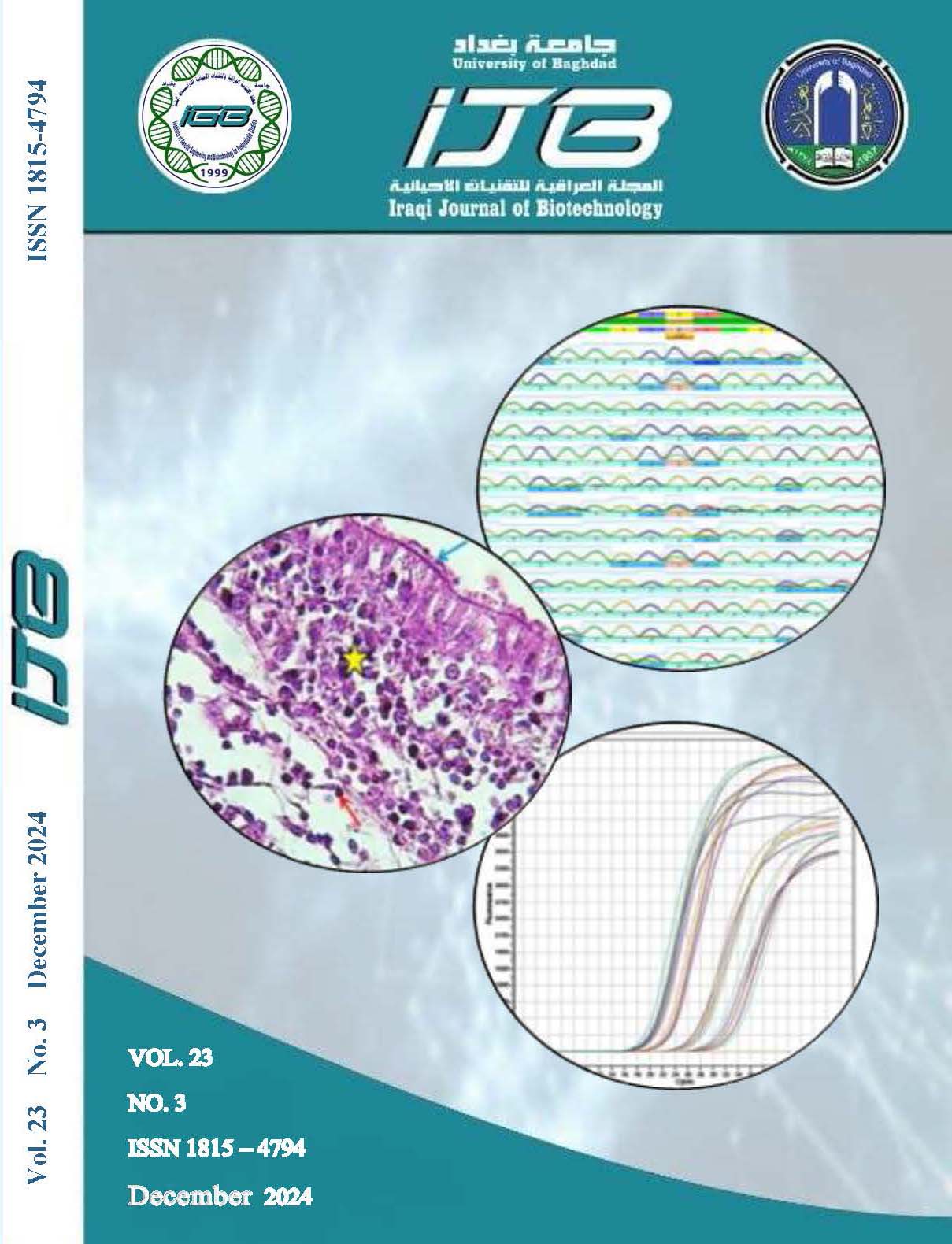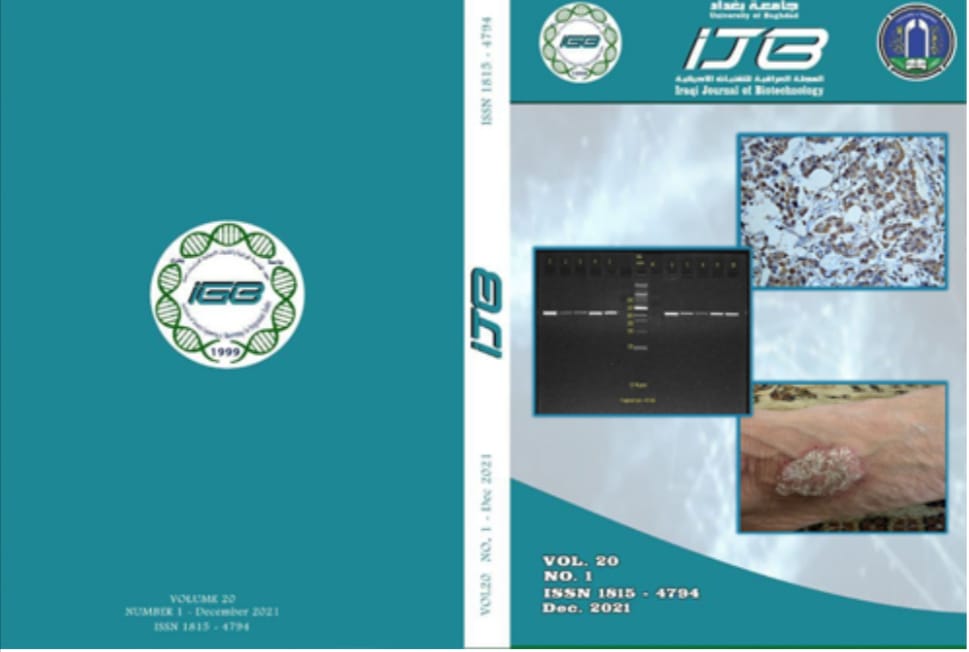Effectivity of Copper Nanoparticle Synthesis by Fusarium oxysporum Culture Filtrate as an Antimicrobial Agent against Streptococcus thoraltensis and Proteus mirabilis
Abstract
Fusarium oxysporum is a species which is a source of many mycotoxin producers, capable of synthesis Cu nanoparticles as they produce significant amounts of secondary metabolites which act as a reductase and stabilization agent for the produced nanoparticles. The objective of the current study was to demonstrate copper nanoparticles (Cu NPs), biosynthesis was process using Fusarium oxysporum culture filtrate has not been previously used in Cu NPs biosynthesis. It was used for the first time as a reducing and stabilizing agent to measure its effectiveness as an antibacterial activity against multidrug-resistant (MDR). Clinical bacterial was isolates, including Gram positive bacteria (Streptococcus thoraltensis) and Gram-negative bacteria (Proteus mirabilis). Fusarium oxysporum isolate were diagnosed by PCR and secondary metabolites determined by GC-MASS. One hundred and sixty specimens of pathogenic bacteria were collected from different sources (wounds, urine, sputum and vagina) then the bacterial isolates were diagnosed as Streptococcus thoraltensis and Proteus mirabilis by using the Vitek-2 system, biochemical assays, and conventional morphological assessment. F. oxysporum culture filtrate done by cultured the fungus using modified Czapek Dox broth media which the cornmeal is added, incubated for 14 days with shaking at 27±20C and filtered by Millipore. The biosynthesis of Cu NPs was prepared by adding 1 g of Copper (II) hydrogen carbonate (CuCo3 Cu (OH)2) to 10 ml of Fusarium oxysporum culture filtrate, the NPs were diagnosed using modern methods, FT-IR, AFM, FE-SEM, and EDX techniques. The prepared Cu NPs was examined against multidrug-resistant Streptococcus thoraltensis and Proteus mirabilis. It was concluded that the prepared NPs inhibited pathogenic bacterial isolates. The inhibition for the Streptococcus thoraltensis indicated at concentration of 500, 250, 125, and 62.5 mg/ml., and for Proteus mirabilis indicated at concentration of 500, 250 and 125 mg/ml.


